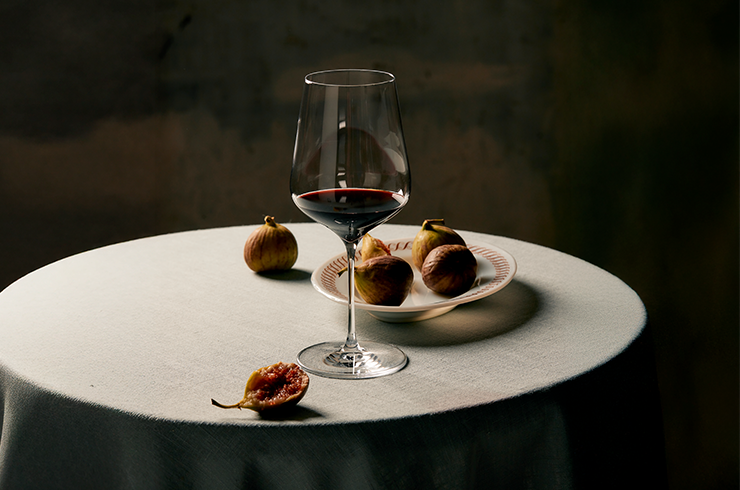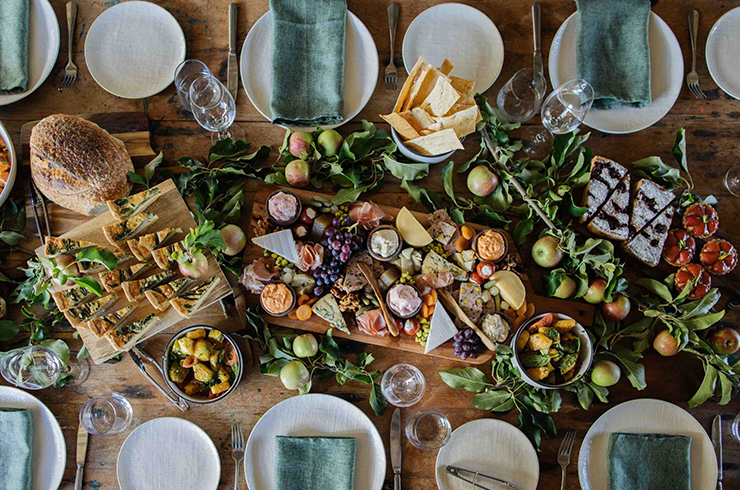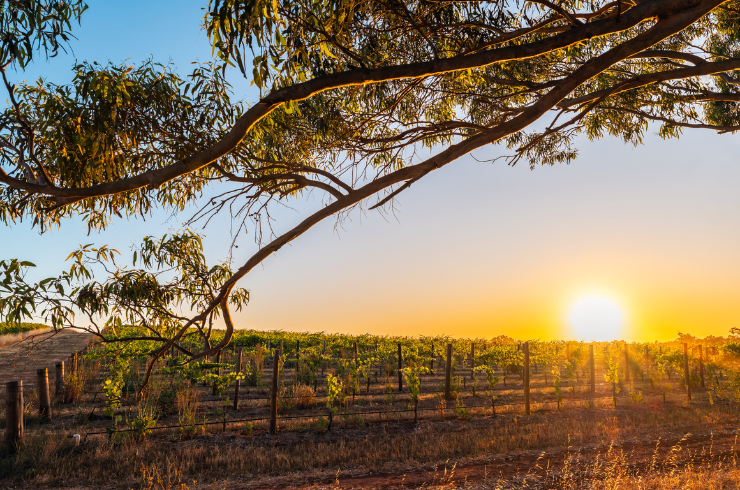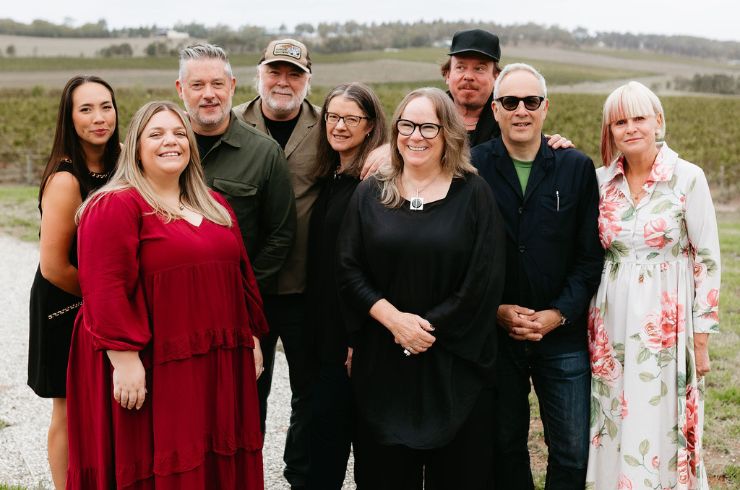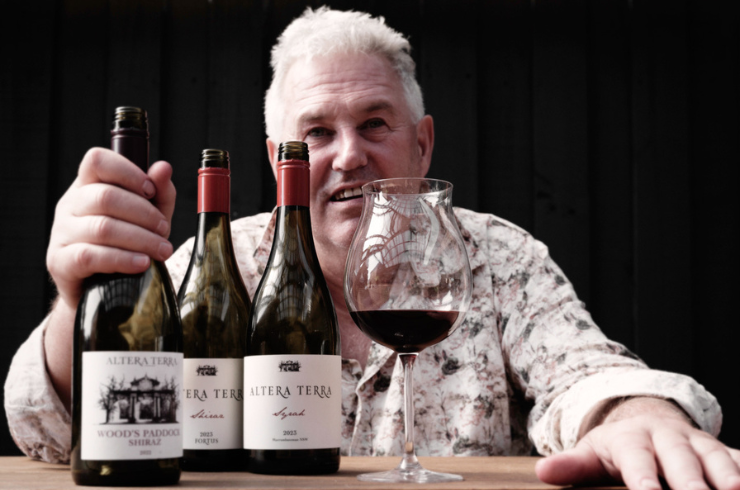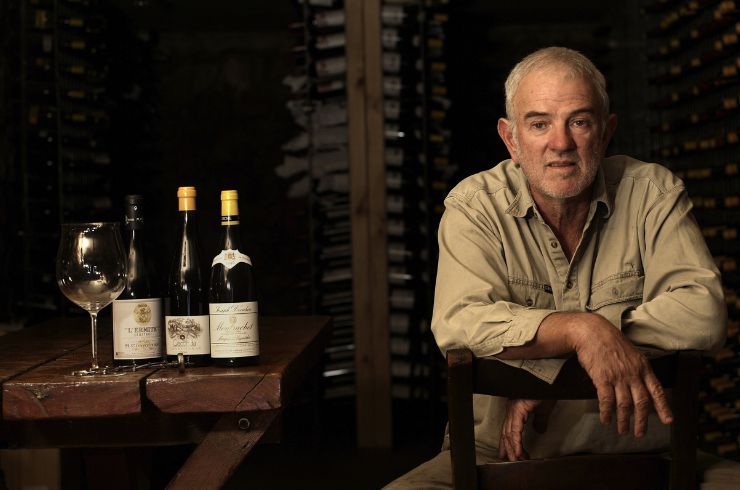Best’s Great Western is poised to release the 2020 vintage of its most prestigious wine – the Thomson Family Shiraz – on Thursday, May 1. The team has been producing this wine since 1992, sourcing fruit from just 15 rows of old shiraz vines that were planted in 1868 by Henry Best.
The vines yield fewer than two tonnes per acre, and are hand-harvested and hand-sorted. Traditional winemaking methods are also honoured in the winery – like hand-plunging the ferments in small open fermenters.
It was the 2017 Halliday Wine of the Year, when it scored an all-impressive 99 points, and vintages since have consistently garnered high scores. It has a strong legacy, and is only made when everything goes right. When the seasons aren’t optimal, the team blends these grapes into other products like Bin No.0 Shiraz, and skips bottling the Thomson Family Shiraz.
How the team worked with a tough vintage
This latest vintage is the 18th release of the Thomson Family Shiraz, and it comes from a very trying year.
Fifth Generation vigneron Hamish Thomson shares, “This was a really challenging year. Not only did we have to contend with the pandemic, but there was also drought and bushfires.
“A hot and dry growing season meant that the vines ripened quickly and crops were particularly lower than average. It has meant that the wine has incredible intensity and flavour, with vibrant acidity.
“Vintage conditions in 2020 also meant that we needed to treat the wine a little bit differently. Keep in mind, when you’re working with a tiny parcel of fruit from a vineyard planted in 1868, you need to respect the fruit that you have to work with.
.ashx)
“We wanted to capture all of the elegant characters in the wine, so bottled the wine after 15 months (a few months earlier than we’d typically do). [Former] winemaker Justin Purser decided if he left the wine in the barrels for too long that we may have lost some of the freshness.
“So, we bottled it to maintain the fruit flavour and retain those fresh, delicate flavours. There’s a real intensity on the palate which has developed with the extra time in the bottle.”
Halliday taster Jeni Port tried and reviewed this vintage back in 2022, awarding it an impressive score of 95. But the Best’s team decided to hold back on release, believing that it needed a little more time to develop more tertiary notes.
Hamish mentioned, “For this particular 2020 year, bottle development has been more important than it normally would have been. It has aged well and has taken some time to come into its own, but now it is very much worthy of the Thomson Family classification.”
Dealing with the declining popularity of shiraz
And even though shiraz producers might be having a tough time at the moment – with consumers drinking less of this variety – Hamish and the Best’s crew are not too worried.
He shared, “Shiraz in Australia has many guises. The big, higher alcohol styles are not necessarily all that consumers want to drink. Our cool climate in Great Western has allowed us to make wine at reduced alcohol levels for years.
“We’ve never followed the fads and continue to innovate around shiraz. It’s not about chasing trends, rather evolving and making sure that our messages are clear – once you get liquid on lips, the wine often speaks for itself and wine lovers are excited about what is in their glass.
.ashx)
“Being a traditional wine brand brings much responsibility – we want to stay true to who we are, and this authenticity carries through to the wines. Our core shiraz products are traditional in style but are approachable, food-friendly and beautifully balanced.
“There’s also innovation that happens with different shiraz in our range – the LSV Shiraz having a little addition of viognier to make it different, Hamill Shiraz a little bigger in palate weight and our new Syrah Blanc (white wine made from 100% shiraz grapes) is a different twist.
“We like to think of ourselves as the Masters of Shiraz and whilst we play with a range of different varieties, it’s often the taste of shiraz that introduces people to the story of Best’s. There’s something for many consumers to discover across different price points within our shiraz portfolio.”
The future of Thomson Family Shiraz
Looking forward to upcoming vintages, Hamish is also very optimistic. He shared, “2021 and 2023 were what we’d call 'classic vintages'. They have their own character, but it’s like talking to my own grandpa or my dad who is now in his 80s.
"The vines have seen this stuff and develop their own memories. You can see the life and experience because there is a depth that you don't get in a younger vine. In a way, they are stubborn old things and have a life of their own.”
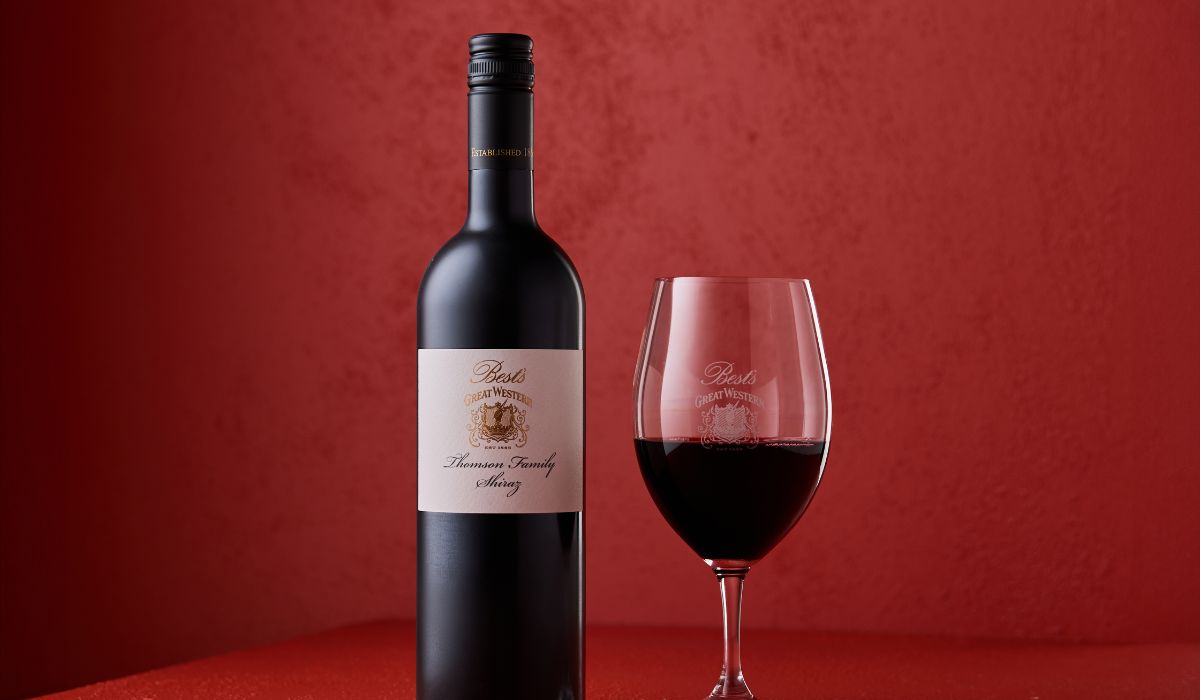
And speaking of aging these legacy wines, Hamish notes how, "One of the unique things about Best’s is that we have a long list of back vintage wines that are stored in the winery and in our underground cellars. It is beautiful to see as these wines evolve in the bottle, that they have a character of their own.
"Some progress at their own rate, depending on the vintage that prevailed. We always advocate for not keeping a wine too long and drinking it before it passes its prime. Thomson Family Shiraz is one of those wines worthy of an occasion – a celebratory wine that you can enjoy as much now as in the years to come."
You can find Jeni Port’s full tasting note and score below, and head to the Best’s Wines website for more details.
Jeni Port’s Thomson Family Shiraz tasting note
Oozes class and elegance. Destined for a long and fruitful life, Thomson Family Shiraz embraces blackcurrant, blood plum, bramble, briar, earth and spice. Fine in features, it can be deceiving because there is a strength here, built on old vines and the gentlest of oak which allows the fruit to sing. – Jeni Port, 95 points
Join Halliday Wine Club to drink the very best of Australian and New Zealand wine
Are you an explorer, enthusiast or collector? No matter the Halliday Wine Club plan you choose, each month we'll deliver two bottles of 95+ point wines direct to your door. From $89 per month. You can skip, pause or cancel anytime. Join now.
Latest Articles
-
Win
Win a stunning collection of Plumm glassware and wine, valued at over $500
1 day ago -
Wine Lists
Top Christmas wines under $30 (and five worth splurging on)
1 day ago -
Wine Lists
Why you should drink Australian this festive season (and 80 of our best wines to try)
1 day ago -
From the tasting team
The Aussie wines the Halliday Tasting Team will be opening this festive season
1 day ago
